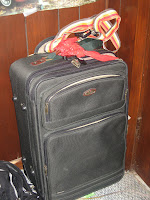We’ve all heard about it, we all bitched about it (me especially), but damn the weather sucked that whole month we were in Dublin (ok, another exaggeration…but I would say it sucked 97% of the time). Now I know that there was an unusual amount of rain, even for Irish people, but it did make me wonder how the Irish cope with their weather situation. I was told it barely snows, so no happy times White Christmas. And I was told that it’s rainy and windy all year round, except sometimes it’s freezing rain – something new and different. How do the Irish cope? My first guess is suicide. In 2005 401 people took their lives, 335 men and 66 women. However, there still seems to be a lot of people in Ireland, so that can’t be the answer. Antidepressants? Well, I had trouble finding exact figures, and I’m not going to try to make them up, because I have a well-documented tendency toward exaggeration. But I’ll bet antidepressant prescriptions were up this year. However, I don’t think Ireland’s the next Brave New World, so the next option – drinking, alcohol that is. You don’t even have to leave the house in crappy weather to get pissed with your friends, how convenient! In 2002, 421 men and 459 women (ages 18+) were polled and 28.6% of men and 13.3% of women reported weekly ‘risky drinking.’ Risky drinking is defined as “weekly consumption of 21 standard drinks for men and 14 standard drinks for women (one standard drink is the equivalent of 10 g of pure alcohol).” (World Health Organization Statistics). I don’t think that’s it, any self-respecting American college student boasts about that much, so Ireland’s not too different.
So what’s left? All the morbid, stereotypical options are out, that leaves only the cliché. Truthfully, I don’t know how Irish people survive their crazy weather, but I know how I survived it. I think, to go all out, I would have to quote Joe Cocker and say, “I get by with a little help from my friends.” Without all you great people I met in the program, and the other Leeson Hall team mates, I don’t think I would have made it through. If I couldn’t have woken up every day, looked out the window, then said to Brianne “Oh good, something new and different,” or learn all the words to Umbrella with Brianne and Becca so we could sing it every time we inevitably opened an umbrella, or vented my frustration karaoke-style with everyone, I would not have made it. There are dozens more instances where you guys really kept me going, and I just wanted to say thank you. Thanks for making this a wonderful experience, and being part of me actually getting home alive. Thank you.

Myself, Becca, and Brianne in Kerry. "Love us three." Yeah, I went there.





























































